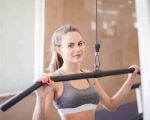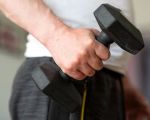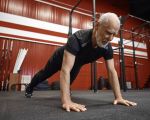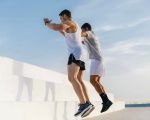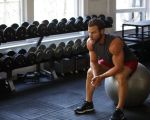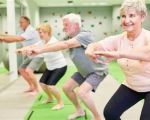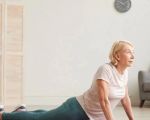- why-reaction-time-matters-in-fitness-performance
- core-principles-of-reaction-training-in-the-gym
- top-gym-workouts-for-enhancing-reaction-speed
- mental-and-visual-cue-drills-that-elevate-performance
- case-study-from-everyday-gym-goer-to-game-ready-reflexes
1. Why Reaction Time Matters in Fitness & Performance
Reaction time isn’t just a metric for professional athletes; it plays a critical role in everyday fitness, sports, and injury prevention. Whether it’s a boxer anticipating a punch, a basketball player stealing a pass, or an everyday runner avoiding an unexpected obstacle, quick reflexes can make or break performance—and safety.
Improving reaction time isn’t limited to genetics or elite-level coaching. With consistent training and the right approach in the gym, anyone can enhance their reflexes. That's where targeted gym workouts for improving reaction time come into play—structured exercises designed to fine-tune both body and brain responses under pressure.
2. Core Principles of Reaction Training in the Gym
2.1 Neuromuscular Connection
One of the key elements behind faster reaction time is strengthening the neuromuscular connection—the brain’s ability to send signals quickly and accurately to the body. Drills that combine movement with visual or audio stimuli help improve this vital connection.
2.2 Explosiveness and Agility
It’s not enough to recognize a cue quickly; the body must also respond with explosive movement. That’s why agility ladders, cone drills, and plyometrics are foundational in any gym workout focused on reaction improvement. These exercises train your muscles to move fast and efficiently in all directions.
2.3 Cognitive Engagement
Reaction isn’t purely physical—it’s mental. Including unpredictable elements in workouts, such as randomized partner cues or sudden changes in routine, helps condition your mind to process and act without hesitation. The gym becomes not just a place for strength, but a lab for cognitive sharpness.
3. Top Gym Workouts for Enhancing Reaction Speed
3.1 Plyometric Box Drills with Audio Cues
Combine classic box jumps with claps or buzzers to add an audio reaction layer. The goal is to leap instantly upon hearing the cue. This conditions both lower-body explosiveness and auditory processing speed. Athletes across sports like soccer and volleyball regularly use this method.
3.2 Partner Mirror Drills
This simple yet effective workout involves facing a partner and mimicking their random movements as quickly as possible. It can be adapted to any fitness level and reinforces hand-eye coordination. These drills are popular in martial arts and basketball warm-ups.
3.3 Light Wall Reflex Trainers
Interactive light panels or handheld reflex balls are increasingly found in modern gyms. They use randomly flashing lights or bouncing movements to demand rapid, accurate responses. It’s not just a workout—it’s fun, and great for developing precision under pressure.
Looking for smart training gear or reflex trainers? Our platform Fitness offers a curated selection of tools designed specifically for reaction-based workouts.
4. Mental and Visual Cue Drills That Elevate Performance
4.1 Shadow Sparring with Randomized Timing
Shadowboxing isn’t just for fighters. By incorporating randomized signals (like a trainer shouting “GO” or a screen showing targets), you train your body to react to spontaneous inputs. This mimics real-life athletic scenarios and builds both speed and control.
4.2 Sprint Starts with Delayed Cues
Have a training partner or app give a randomized “GO” command to start a sprint. This avoids anticipation and instead teaches true reaction under delay. Sprinters often use this to replicate race conditions, but it's equally useful for general athletes wanting sharper starts.
4.3 Ladder Drills with Callouts
As you run footwork patterns on an agility ladder, have a partner call out directional commands mid-drill. You’ll not only get faster, but also smarter about adapting movement on the fly—essential for team sports, emergency response, and even everyday coordination.
5. Case Study: From Everyday Gym-Goer to Game-Ready Reflexes
Jake, a 34-year-old recreational tennis player, noticed he was consistently reacting late to fast serves. Frustrated, he started a 6-week gym plan focused specifically on reaction time—starting with agility ladders, adding light panel drills, and even using a reaction ball.
By week four, Jake was returning serves he previously couldn’t even touch. Beyond the court, he also reported feeling “sharper” in everyday tasks—like catching falling objects or navigating busy crosswalks more confidently. He documented his routine and sourced most of his training tools from Fitness, which helped streamline his progress.
Improving reaction time isn’t just about being quick—it’s about being ready. With structured workouts, mental focus, and the right equipment, anyone can sharpen their reflexes, no matter their sport or fitness level.


